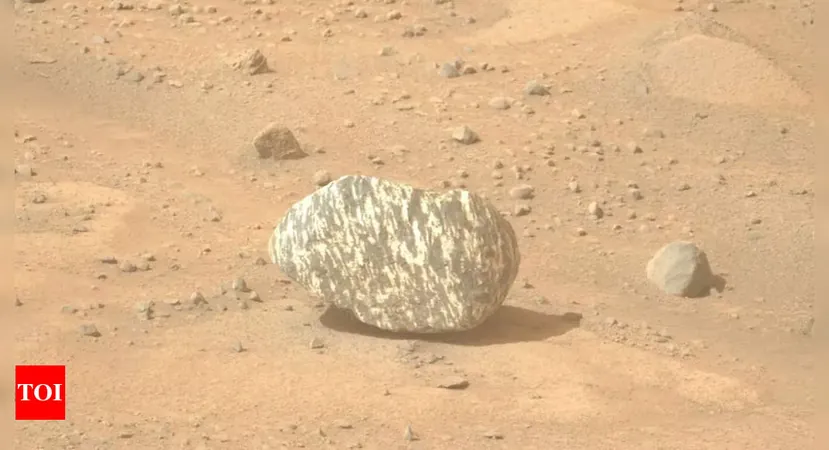
NASA's Incredible 'Zebra Rock' Discovery on Mars: What It Means for Future Martian Missions!
2024-09-27
Author: Arjun
NASA's Perseverance Rover's Discovery
NASA's Perseverance rover has made a groundbreaking discovery in the Martian landscape—a striking black-and-white striped rock, affectionately dubbed 'Freya Castle.' This unusual formation has captivated scientists and ignited discussions worldwide, as it may hold clues to Mars' geological history and potential for past life.
Capturing the Moment
The remarkable 'zebra rock' was captured on camera by Perseverance's high-mounted Mastcam-Z on September 13, during its exploration of the Jezero crater. Despite the rover having moved on from the spot, the images sent back to Earth have sparked intense interest and speculation within the scientific community.
Initial Analyses and Theories
Initial analyses suggest that Freya Castle's unique texture has not been observed in any previous Martian rocks. Experts theorize that its distinctive striped appearance may be the result of igneous or metamorphic processes, indicating a complex geological history. While the rock was initially spotted in lower-resolution images, the subsequent high-resolution snapshots have allowed scientists to investigate its properties in greater detail.
Physical Characteristics of Freya Castle
Measuring approximately 8 inches (20 centimeters) across, Freya Castle's composition differs significantly from the surrounding bedrock. This indicates that the rock likely originated from a different location, possibly cascading down from a higher crater, which raises questions about the geological activity on Mars.
Perseverance's Current Mission
Perseverance, which landed on Mars in February 2021, is currently navigating the slopes of Jezero crater as part of its fifth science campaign, known as the Crater Rim Campaign. Although the rover's ascent has been gradual, it is now traversing flatter terrain, allowing for more rapid exploration.
Other Unique Geological Features
Freya Castle is not alone in the roster of unique Martian rock formations. Since the rover's landing, scientists have uncovered a plethora of extraordinary geological features, including boulders at Mount Washburn and a recently discovered leopard-spotted rock. Each of these findings is pivotal in piecing together the intriguing history of Mars and the potential for ancient microbial life.
Looking Ahead
As we continue to analyze these rock formations, particularly Freya Castle, researchers hope to gain profound insights into the early conditions of Mars. This ongoing investigation could not only enhance our understanding of the planet but also assist in future missions aimed at uncovering signs of life beyond Earth.
Stay Tuned for More Updates
Stay tuned for more updates on this exciting journey into Mars' mysteries—who knows what other astonishing discoveries the Perseverance rover has in store for us!



 Brasil (PT)
Brasil (PT)
 Canada (EN)
Canada (EN)
 Chile (ES)
Chile (ES)
 Česko (CS)
Česko (CS)
 대한민국 (KO)
대한민국 (KO)
 España (ES)
España (ES)
 France (FR)
France (FR)
 Hong Kong (EN)
Hong Kong (EN)
 Italia (IT)
Italia (IT)
 日本 (JA)
日本 (JA)
 Magyarország (HU)
Magyarország (HU)
 Norge (NO)
Norge (NO)
 Polska (PL)
Polska (PL)
 Schweiz (DE)
Schweiz (DE)
 Singapore (EN)
Singapore (EN)
 Sverige (SV)
Sverige (SV)
 Suomi (FI)
Suomi (FI)
 Türkiye (TR)
Türkiye (TR)
 الإمارات العربية المتحدة (AR)
الإمارات العربية المتحدة (AR)